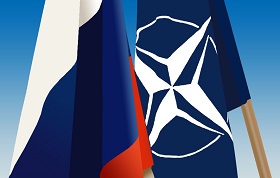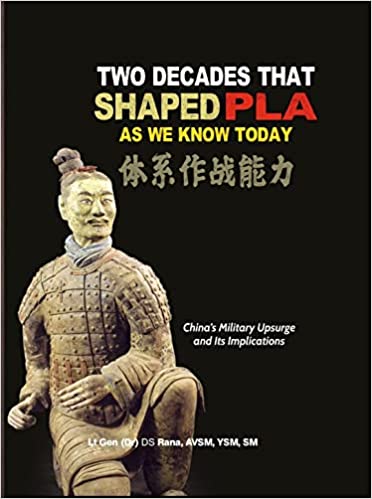Is the North Atlantic Alliance going through a crisis? What are the causes and consequences of its five transformation waves? What is the Smart Defense approach and what are the key mechanisms for its implementation? How is the development of partnerships linked with the bloc’s main transformation and reform projects? How will Russia-NATO relations develop taking into account factors affecting mutual perceptions? The article attempts to answer these and other questions.
Experts and politicians have been buzzing about the NATO crisis for more than 40 years, beginning from the 1966 decision by Charles de Gaulle to withdraw France from its integrated military structures and move headquarters from Paris to Brussels. If the crisis is interpreted as the beginning of the end, i.e. as the initial step to a breakup or voluntary dissolution, in line with the predominant Soviet approach after 1966, the discussion of similar phenomena in transatlantic relations within this context appears not to pertain either to the second half of the 1970s or the early 1990s or the 2000s or today. At the same time, if the crisis is regarded as leading to the emergence and disclosure of problems, as well as the search for compromises and successful problem-solving, crises in NATO have always existed and will keep surfacing. This very fact is indicative of the durability of the system and the desire of all its participants to find consensus solutions for current and emerging conundrums.
The Alliance Transformation
After the Soviet Union disintegrated, NATO has demonstrated both excellent adaptability and transformability. Over the past 23 years, the organization has survived five transformation waves, triggered by the breakup of the USSR, the events of 9/11, operations in Afghanistan and Iraq, and the global financial crisis. Generally speaking, these changes have been geared towards adapting the alliance to its new environment and challenges in the late 20th and early 21st centuries, which have expanded the former definition of security. During the fifth transformation wave, which was caused by the global economic crisis, NATO members used lean budgets to solve the most complicated problem of maintaining appropriate levels of military assets. First, most members had to slash defense spending. Second, a huge disproportion surfaced in the military allocations of the U.S.A. versus its European allies (72 against 28 percent in 2012). Third, there was an increase in the gap in the defense potential of European NATO members (UK – 6.9 percent, Germany – 4.6, Italy – two percent of overall spending).
Smart Defense and its Implementation Mechanisms
In order to overcome existing difficulties, the NATO Chicago Summit in May 2012 approved two initiatives, i.e. Smart Defense and Connected Forces, both aimed at establishing a streamlined structure of deployable, interoperable, self-sufficient, as well as properly trained, equipped and organized force with an effective control system in place by 2020 despite current defense spending cuts by most member-countries. The force is intended to accomplish missions related to crisis resolution and to help protect NATO from new challenges.
Smart Defense provides for reasonable spending and deeper cooperation. Because of the economic crisis, bloc members chose to jointly maintain their defense potentials since individual efforts appeared unfeasible (such as the coordination of efforts and the acquisition of new weapons).
The Chicago Summit approved 22 Smart Defense projects aimed at achieving austerity and at the same time raising operational efficiency and the interconnectedness of forces, including the following:
- NATO Universal Armaments Interface enabling different fighter jets to use munitions from various sources and countries.
- Maritime Patrol Aircraft: a multinational pool of maritime patrol aircraft, available to all participating countries.
- Multinational Medical Treatment Facilities in support of operations, which will allow countries to make the best possible use of medical assets.
- Multinational deployable airfields.
- Missile defense, ground surveillance systems, and joint intelligence and reconnaissance capacities, all regarded as top priorities.
As of today, 25 projects have been approved, with each country undertaking to participate in at least two-thirds of the total number.
The Connected Forces Initiative emerged from the Afghanistan joint operations experience, as the Chicago Summit decided to retain the interoperability of the forces from countries participating in the stabilization efforts after 2014 when the ISAF mission will be completed. To reach this aim, multinational exercises will be held to practice command, control, communications, as well as intelligence and reconnaissance missions.
In addition, NATO has been reforming its internal structures since 2011. Restructuring covers the Agencies, the International Secretariat and the International Military Headquarters. Beginning from 2012, the Agencies are being gradually replaced by four new structures in charge of communications and information, logistics, acquisitions, and technology research. The number of military control structures will be cut from eleven to seven, while personnel is to be reduced by 33 percent. The International Secretariat reform suggests the establishment of a leaner and more efficient staff focused on NATO’s key missions.
NATO and Partners
Over the past 20 years, Brussels has created a system of partnerships with European Atlantic, Mediterranean and Persian Gulf states, as well as with international organizations; it has also launched a system for global partnership to engage Australia, Japan and New Zealand. In 2002, individual partnership programs were signed with Australia, New Zealand, Iraq, Mongolia and the Republic of Korea. Currently, the alliance is working on a new political framework for the Mediterranean Dialogue, i.e. NATO plus seven Mediterranean countries. Kuwait has agreed to host the Regional Center of the Istanbul Cooperation Initiative, intended to advance relations with the Persian Gulf states.
The partnership concept matches the spirit of Smart Defense and is aimed at making real transformation's core idea, i.e. to adapt the bloc to the 21st century. According Andrew T. Wolff of the U.S. Army War College, by developing the partnership concept, NATO is trying to promote democratic values through cooperation, consultations and reforms for implementation of the initiative’s underlying concept: member-states will be more secure if their partner countries share their system of values, norms and standards, and maintain similar systems of political governance [1].
Russia-NATO: Problems and Outlook
Bearing in mind the level of security threats that are mostly of transborder character, Russia needs an effective NATO, able to adequately respond to existing challenges and develop the partnership with Moscow.
However, in recent years, NATO's perception by Russian elites has been defined by the following factors:
- The U.S. factor, i.e. a vision of NATO as an organization for the protection and advancement of the interests of the United States, which uses the alliance as a tool for establishing the rules of the game for the eventual attainment of global dominance.
- Many in Russia see the alliance transformation as a claim in favor of a global role in security that may allegedly dislodge the UN, while Russia is still a Permanent Member of the Security Council.
- The expansion of the alliance is linked to the so-called forcible democratization and ousting of Russia out of its traditional area of influence, i.e. from the post-Soviet space, as well as to the Western desire of encircling Russia with military bases.
- Differing assessments of the event in the Caucasus in August 2008, which boiled down to a freeze in the Russia-NATO Council relationship (which was unfrozen only in December 2009).
On the whole, Russian debates on foreign and security policy, the future European architecture, NATO's role, and its relations with the alliance reflect the inability of Russia's political institutions to face security challenges, as well as the specific type of strategic culture that regards security through the prism of geopolitics but not integration. As a result, the real or imaginary external enemy provides a foundation for increasing military spending, while the besieged fortress stereotype gives rise to a national consensus with an anti-Western bent. At the same time, genuine internal and external threats are largely neglected.
The Russia-NATO relationship appears to depend greatly on Russia's domestic politics and the level of threats to its security emanating from international terrorism. At that, the heart of the matter is in the readiness of the bloc to expand and deepen cooperation, bearing in mind that historically Russia has quite a dissimilar political culture.
Unfortunately, the strategic partnership discussed at the Russia-NATO Summit in Lisbon has remained only on paper. After the Summit, the parties have stepped up practical interaction in such areas as counterterrorism, Afghanistan, the war against piracy, cooperation in airspace, search and rescue at sea, and military cooperation. At the same time, talks on missile defense, a major bilateral issue, are deadlocked due to the credibility gap and asymmetrical norms and standards.
Russia's mistrust has been shaped not just by traditional anti-Western phobias and Cold War stereotypes but also by the dynamics of the relationship in the post-Soviet era. Over the past 15 years, milestones for Russia's stance toward NATO include the Kosovo crisis, the bloc's eastward expansion, the 2008 events in the Caucasus, and the Libya operation. NATO's consensus on Russia is also fragile, since certain member states fear both the historical past and Russia's policies in North and South Caucasus, gas wars in the post-Soviet space, and positions on the BMD and the CFE Treaties.
As far as asymmetry in norms is concerned, the transatlantic community would like to promote a system that suggests transparency in the state's military and financial efforts, democratic and civilian control of the military and secret services, and civil society control over the government. With corruption running high, the establishment of such norms in Russia threatens unrestrained bureaucratic groups, which triggers the self-preservation instinct of certain elite segments, usually occurring as soon as the menace appears.
Russia-NATO political cooperation obviously lags behind successful interaction in the above areas, the key being the lack of progress on the BMD and CFE tracks. On the whole, the bone of contention is still in the disarmament agenda, a Cold War remnant. Over the past several weeks, after the U.S.A. gave up the BMD Phase 4 (rejection of the SM3 Block II B antimissiles designed for intercepting ICBMs), hopes have emerged for an agreement on ithe ntegration of Russian and NATO systems, as stated by NATO Deputy-Secretary Alexander Vershbow last March in Moscow [2].
We believe that the successful development of Russia-NATO relations requires the following:
- The development of a cooperation roadmap on Afghanistan after the 2014 withdrawal of the coalition's main forces.
- Progress on the CFE track.
- Expanded sharing of intelligence on developing nuclear potentials in nuclear countries due to major differences in the assessment of missile threats.
- Common approaches to frozen conflicts (primarily, universal standards in defining the stances of different actors in world politics).
- Common approaches to the development of such regions as the Great Middle East (Iran, Syria).
At the same time, the most likely scenario for Russia and NATO seems to be cooperation on issues that suggest a similar perception of threats, e.g. Afghanistan, marine rescue operations, utilization of obsolete munitions, and identification of explosives, etc. Joint projects in these fields are definitely significant but far from principal in relation to the quality of the Russia-NATO relationship.
1. Wolff A.T. The Structural and Political Crisis of NATO Transformation // Journal of Transatlantic Studies. 2009. Vol. 7. № 4. P. 481.
2. Kommersant newspaper, 04/01/2013.







